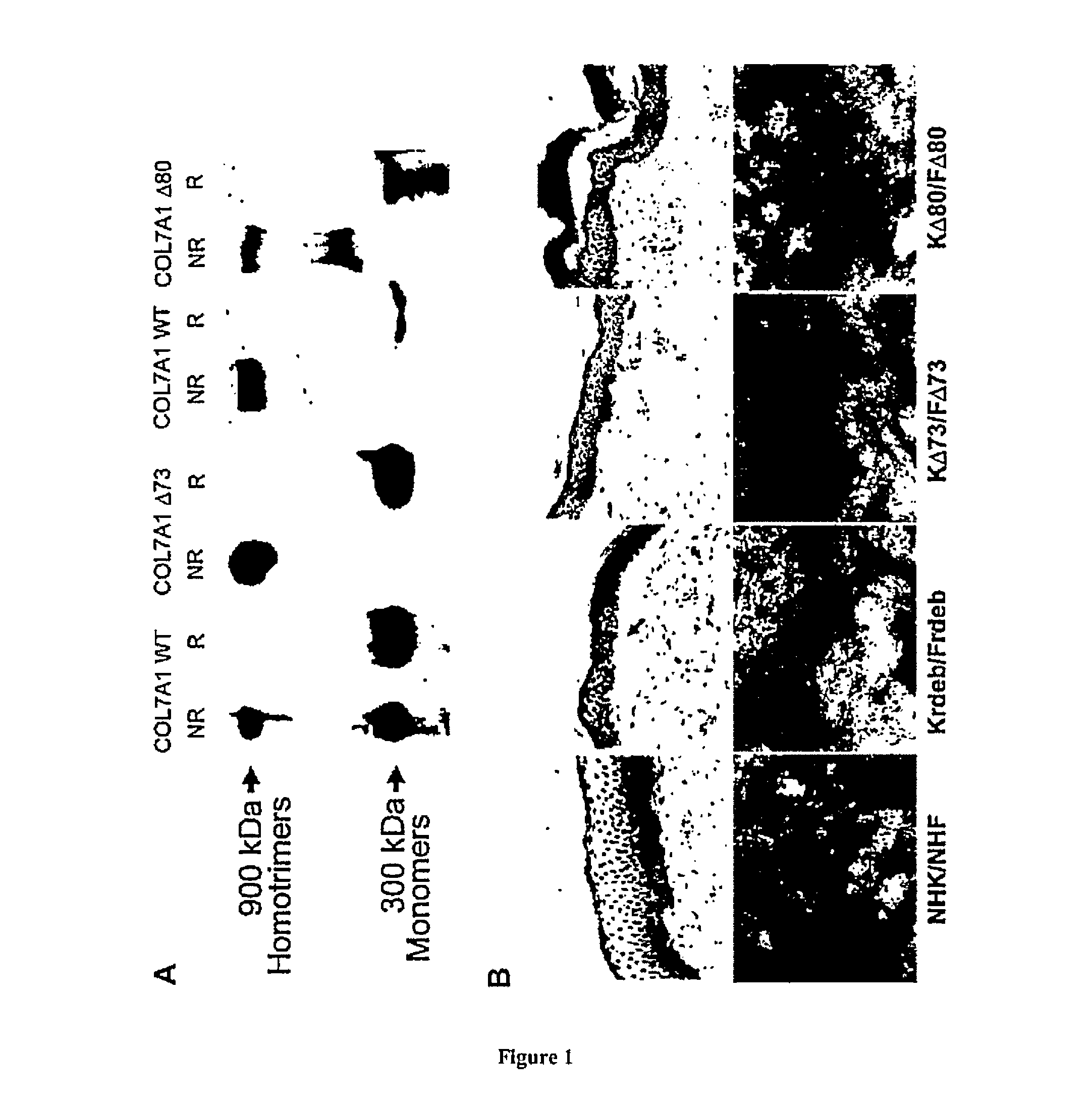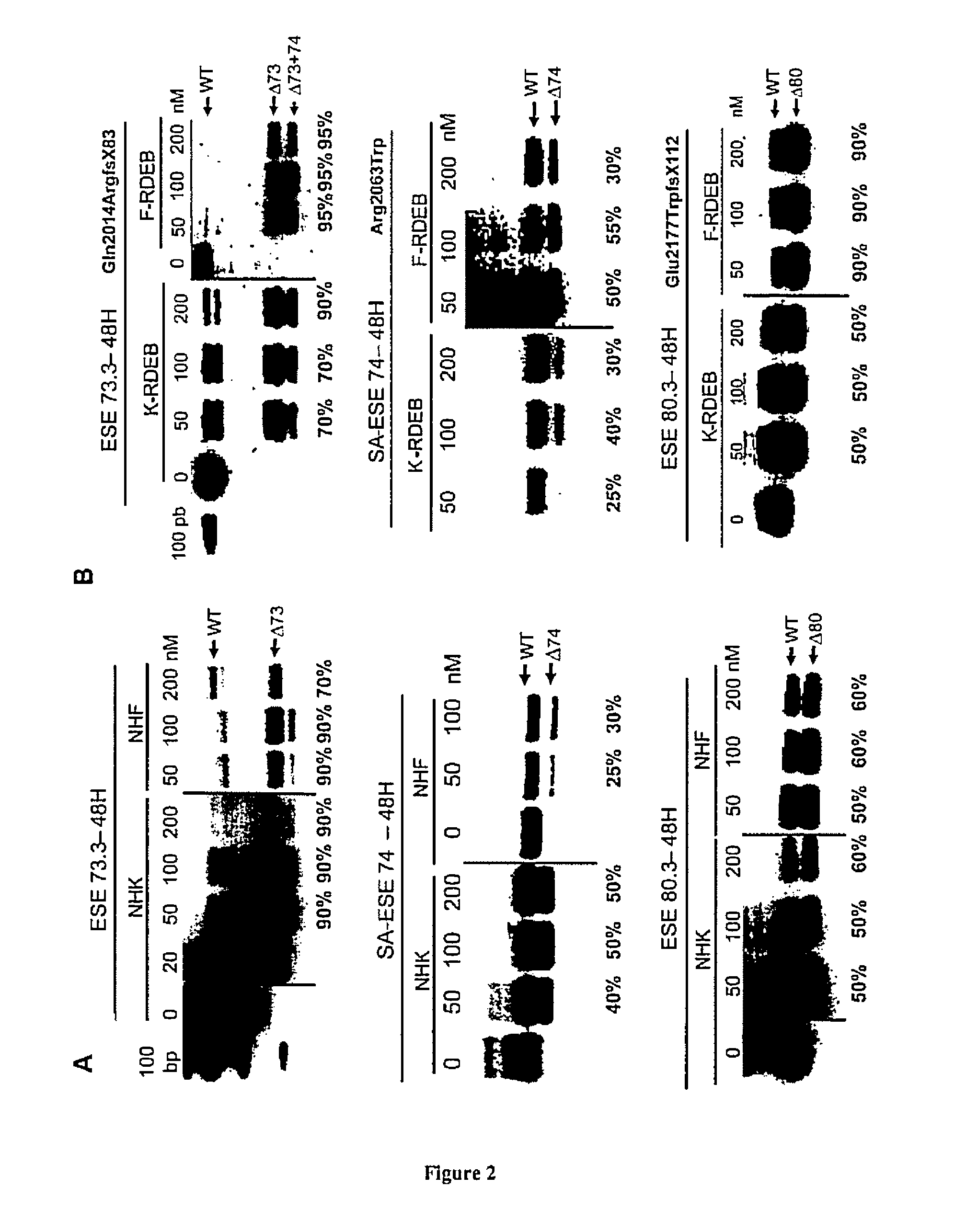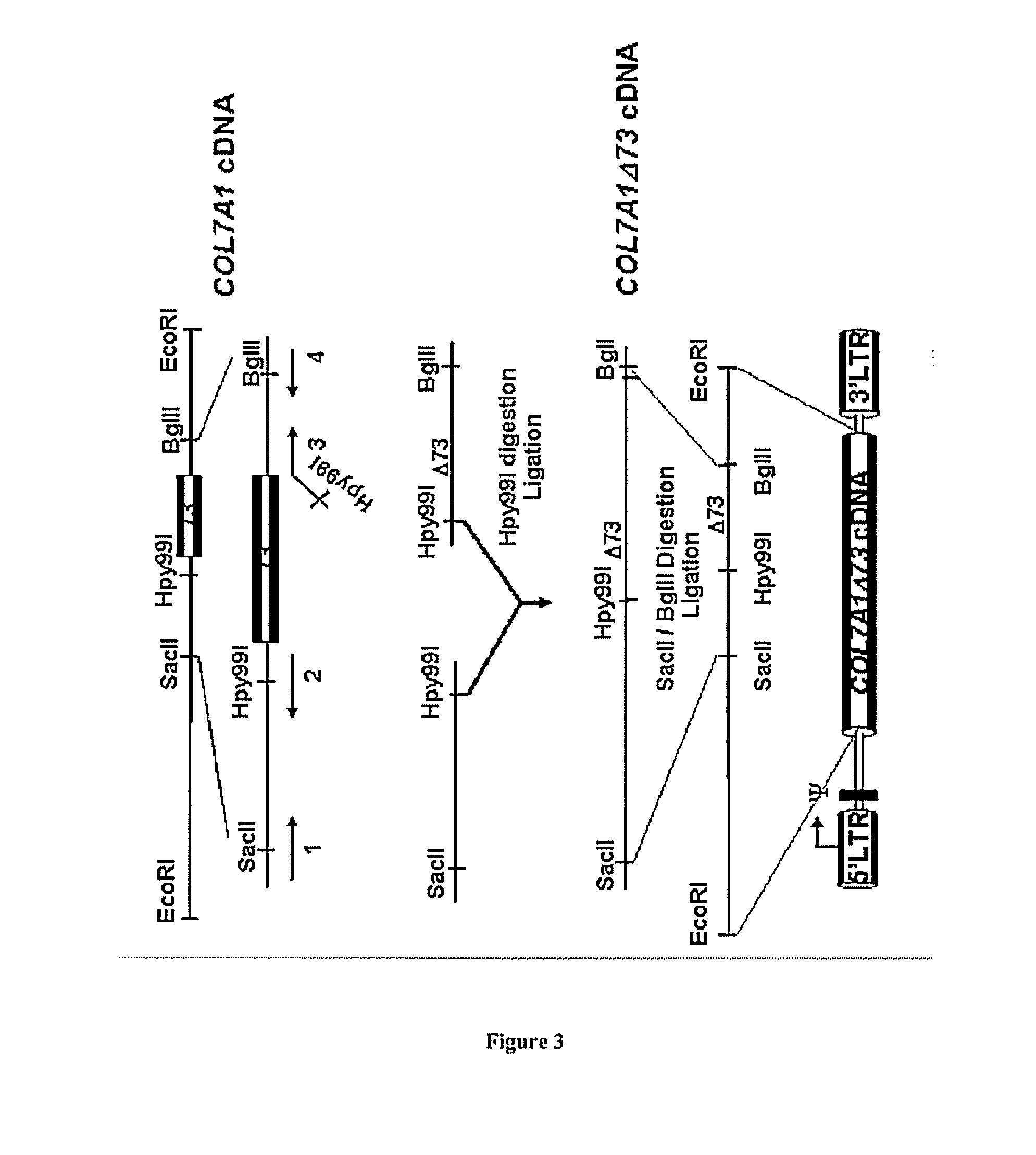Exon skipping therapy for dystrophic epidermolysis bullosa
a dystrophic epidermolysis and epidermolysis technology, applied in dermatological disorders, organic chemistry, drug compositions, etc., can solve the problems of poor prognosis, severe blistering of skin and mucosae, structural defects of anchoring fibrils, etc., and achieve the effect of restoring the function of a mutated type vii collagen
- Summary
- Abstract
- Description
- Claims
- Application Information
AI Technical Summary
Benefits of technology
Problems solved by technology
Method used
Image
Examples
example 1
Demonstration of the Functionality of Type VII Collagen Molecules Deleted of the Sequences of the Targeted Exons
[0064]I-1. Cloning of Deleted COL7A1 cDNAs into Retroviral Vectors.
[0065]To demonstrate that skipping of one of these exons preserves the protein function, different deleted type VII collagen cDNAs were cloned into a retroviral vector (FIG. 3). A SacII BglII fragment encompassing exons 58 to 94 was cloned into a PGEM-T vector (Promega) generating the PGEM-COL7A1-SacII / BglII plasmid. Two primers (1 and 2) were designed to amplify a fragment containing exons 58 to 72. Two other primers (3 and 4) were designed to amplify a fragment containing the Hpy99I restriction site at the end of exon 72 to exon 94 but missing the exon 73 sequence. The red line represents the sequence of exon 72 contained in primer 3. After PCR amplification using Pfx proof-reading polymerase (Invitrogen), the fragments were subcloned into PGEM-T vectors, digested using SacII, BglII and Hpy99I and then cl...
example 2
Demonstration of Efficient Skipping of Selected COL7A1 Exons In Vitro
[0075]Once the demonstration that COL7A1 deleted of sequences encoded by the targeted exons is functional, we have induced the targeted removal of these exons using AONs.
[0076]We have selected over 16 different antisense sequences targeting key splice elements in the selected exons and surrounding introns: donor / acceptor splice sites, branch-point and ESEs as predicted in silico by ESE-finder or RESCUE-ESE softwares (Cartegni et al., 2003; Fairbrother et al., 2002).
[0077]The AONs used was 2′O-Methyl-phosphorothioate modified ribonucleotides. The length and ΔG of self-annealing or dimerization were important factors affecting the AONs efficiency. Resulting best AON sequences are listed in Table I.
[0078]These AONs were transfected using lipofectamine 2000 (Invitrogen) in cultured primary normal and RDEB keratinocytes and fibroblasts at escalading doses ranging from 50 nM up to 200 nM. Results show that exon skipping ...
example 3
Demonstration of Functional Correction In Vitro Following Exon Skipping
[0079]In vitro demonstration of the restoration of type VII collagen functionality following exon skipping can be performed by Western-blot analyses. Fibroblasts of a patient carrying a homozygous nonsense mutation in exon 80 (p.Gln2170Term) have been transfected with the ESE80.3 2′O-methyl oligoribonucleotide (50 nM). Total RNA and total protein were extracted 72 h later. RNA was subjected to RT-PCR to demonstrate in-frame skipping and proteins were subjected to SDS-PAGE and Western-blotting (FIG. 4). A high exon skipping efficiency (˜85%) was demonstrated by RT-PCR and gel densitometry (FIG. 4A). The western blot analysis revealed a strong re-expression of type VII collagen in the RDEB cells after 72 h of treatment with the AON (RDEB-T) compared to non transfected RDEB fibroblasts (RDEB). Type VII collagen expression was estimated to 20% of the amount in normal human fibroblasts (NHF) after only 3 days of treat...
PUM
| Property | Measurement | Unit |
|---|---|---|
| nucleic acid | aaaaa | aaaaa |
| fragility | aaaaa | aaaaa |
| diagnostic electron microscopy | aaaaa | aaaaa |
Abstract
Description
Claims
Application Information
 Login to View More
Login to View More - R&D
- Intellectual Property
- Life Sciences
- Materials
- Tech Scout
- Unparalleled Data Quality
- Higher Quality Content
- 60% Fewer Hallucinations
Browse by: Latest US Patents, China's latest patents, Technical Efficacy Thesaurus, Application Domain, Technology Topic, Popular Technical Reports.
© 2025 PatSnap. All rights reserved.Legal|Privacy policy|Modern Slavery Act Transparency Statement|Sitemap|About US| Contact US: help@patsnap.com



